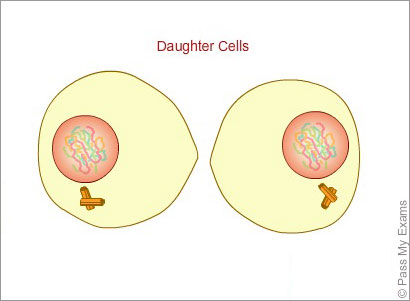Stages of Mitosis
Although mitosis is a continuous process it can be divided into four stages for ease of description:
- Prophase
- Metaphase
- Anaphase
- Telophase
A cell in between periods of mitosis is said to be interphase, this is a period when the cell is growing and carrying out its required functions.
A good mnemonic for remembering these stages is:
| I’m | Interphase |
| Pretty | Prophase |
| Mean | Metaphase |
| And | Anaphase |
| Tough | Telophase |
The animation below shows the stages of mitosis:
Interphase:
A cell in between periods of mitosis is said to be in interphase, this is a period when the cell is growing and carrying out its required functions. During interphase the chromosome material is in the form of loosely coiled fine threads called chromatin. These are named after the chromatin granules that contain the DNA structure situated along the length like beads on a string.
Just before nuclear division, the centriole in the cell duplicates itself. The centriole is a set of protein cylinders located near the nucleus of the cell. Mitosis involves moving a lot of components in the nucleus and this is regulated by the centrosomes. Perfect replicas of each DNA molecule within each chromosome are also created. At this stage the cell has 4 copies of each DNA molecule (2 in each chromosome). When the copy is complete the cell is ready to begin mitosis.
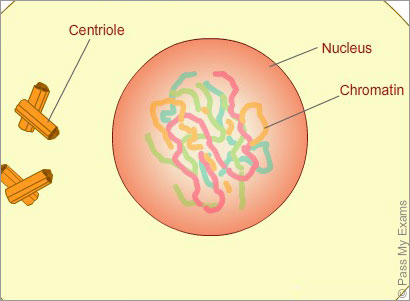
Prophase:
In the first stage of mitosis, the chromosomes become shorter and thicker by the action of coiling and tightly packing of their components. Each chromosome now exists as a pair of chromatids joined together by a centromere. Thus, the prophase nucleus contains twice as many chromosomes as usual. The nuclear envelope disintegrates, and the centrioles each move to the opposite end of the cell, leaving behind a wide trail of protein spindle fibres, called microtubules, running from one centriole to the other.
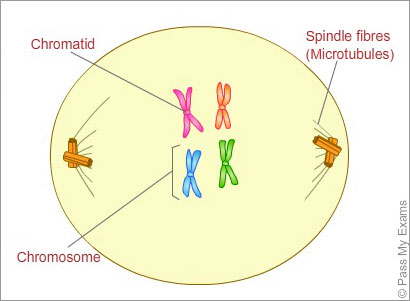
Metaphase:
During metaphase each chromatid pair becomes attached by their centromeres to the spindle fibres. The stage is completed when all the chromatid pairs are lined up in the middle of the cell.
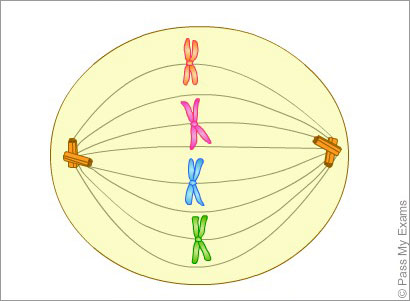
Anaphase:
The centromeres split and the two chromatids of each double chromosome separate. The chromatids of each pair are then dragged to the opposite ends of the cell.
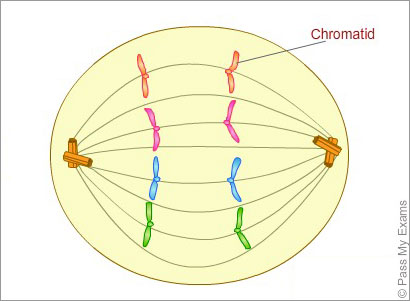
Telophase
The group of chromatids assemble at opposite ends of the cell. The spindle fibres disintegrate and a nuclear envelope forms around the chromosomes at each end. The chromosomes uncoil and lengthen back to chromatin. A crease called a cleavage forms in the middle of the cell and the cell separates by a process called cytokinesis.
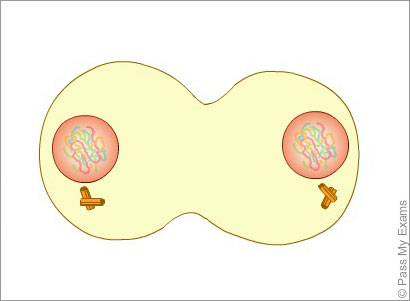
Daughter Cells
Two new identical cells called daughter cells are formed.
